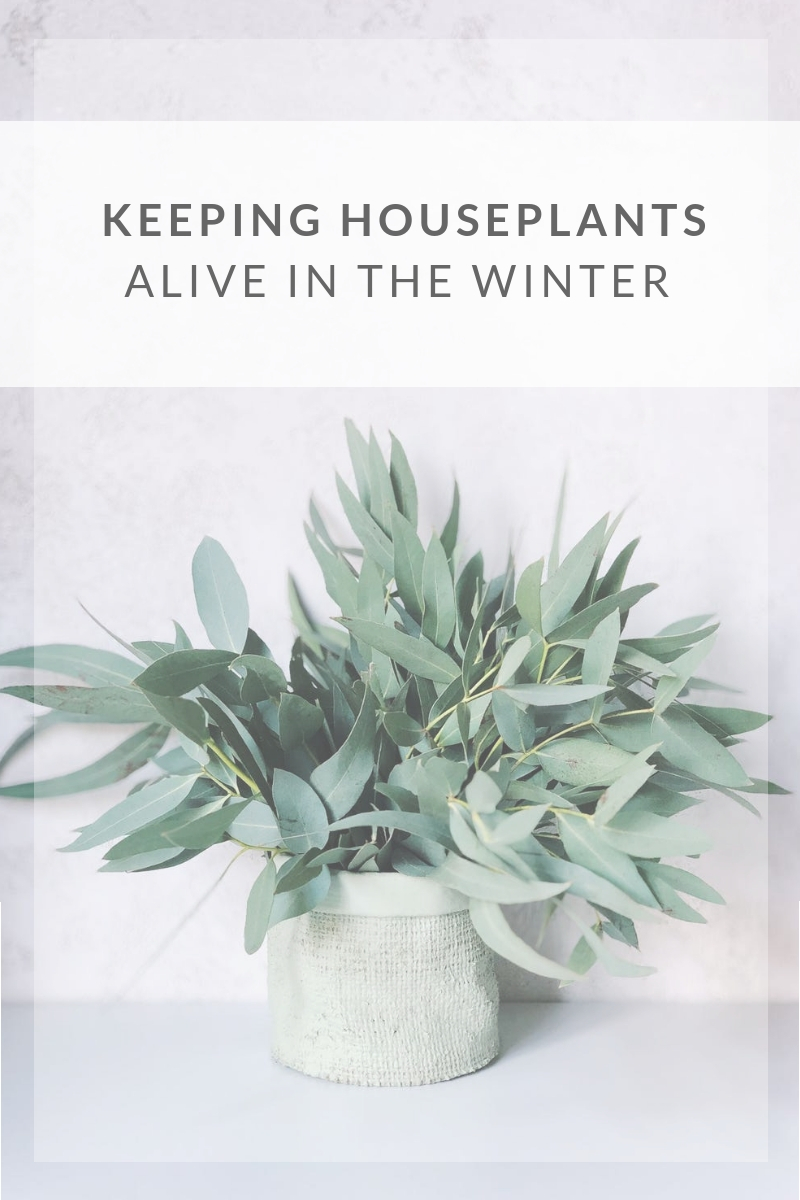As a nature lover, I love the great outdoors and designing outdoor spaces as luxe as the rooms indoors. The next best thing is bringing a little life back inside with you, whether that’s in the form of fresh flowers or plants. The benefits are aplenty — aside from improving the look and feel of a space, they also boost the air quality… But I’m not discussing why you want to include plants in all your rooms today (That’s for a different blog. And you’re likely already convinced of that if you’re already here.)
How I Stopped Killing My Houseplants

Today is all about how to stop killing your houseplants once you have them! And specifically, how to keep your plants alive in the Winter.
Over a year ago, I wrote one of my most popular blogs to date with some quick tips to help care for your houseplants. I had no idea it would catch on the way it did! Apparently a lot of people have this problem or are really afraid of killing their houseplants. Today is a special Winter edition, because plants need special treatment in the colder months. Even in SoCal, where we’d like to think of our weather as fairly consistent, and maintain the same plants year round there are specific things we can adjust to our plant-care routine. So here it goes:
Put Plants On a Holiday Diet: Less is More
- Fertilize Less
You may not be following one this season, but those plants don’t need the extra fertilizer. Give them enough at the beginning of the season to sustain, but you can absolutely kill them by over fertilizing, if you’re not careful. Some plants may require some multch to insulate (though that tends to apply more to the outdoor plants) — Think of it like a Winter jacket, you may still need to keep it on inside for a few minutes while you warm up and adjust to the temperature.
- Water Less
Ok, how do I do that? Hear me out for a minute… Because there is less moisture in the air during the winter, it may feel intuitive to water plants more, but the opposite is true. Plants grow at a slower rate in the Winter months and some even hibernate for the season like bears. Either way they actually need less water, not more! If you’re used to watering your plants once a week, you can probably water them every ten days or so now.
Your Best Skin = Happy Plants
- Humidify More
That said, the water in the air should be improved. We tend to lose about 10-20% if not more of the humidity in our air during the wintertime and just like us humans, the plants can also benefit from the additional boost of having a humidifier around. The humidifier will provide a hands-off and more consistent relief that simply spritz-misting will not.
- Temperature Control
Do you or your spouse have a thing about setting the thermostat at an exact temperature to be comfortable? We’re all generally most comfortable between 65-75 degrees and that drops a bit at night. Plants are the same way! Keep them placed away from air vents or radiators in a consistently temperature controlled space.
Follow the Sun
While plants need less of nearly everything else in the Winter, their light-rotation schedule may need a boost. The sunlit days are shorter in the Winter and the natural light the pours through your windows does so at a lower angle. Relocate your plants to be sure they’re soaking up the rays and keep them rotated!
Grooming is A-Ok!
You can feel free to prune your plant as needed and be sure to wipe any dust build-up off of its leaves so as not to inhibit its ability to photosynthesize,
Pots Protect Weak Roots to Prevent Your from Killing Your Houseplants
- No Repotting
During the Winter months, plants roots are at their weakest, and in the Spring, they are at their strongest. Since a pot’s primary purpose is to the protect the roots, there are a few extra things to keep in mind in the winter: Hold off on trying to repot any plant until the Spring, when it’s roots are stronger.
- Plastic is More Protective
Also, if you do live in a region where the plant will be exposed to extremely cold temperatures, their roots will stay better protected throughout the Winter in plastic, rather than ceramic pots. (This is one problem we don’t really have in Southern California)




